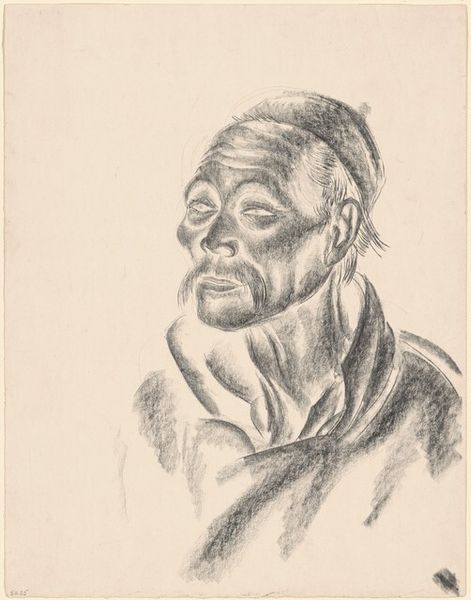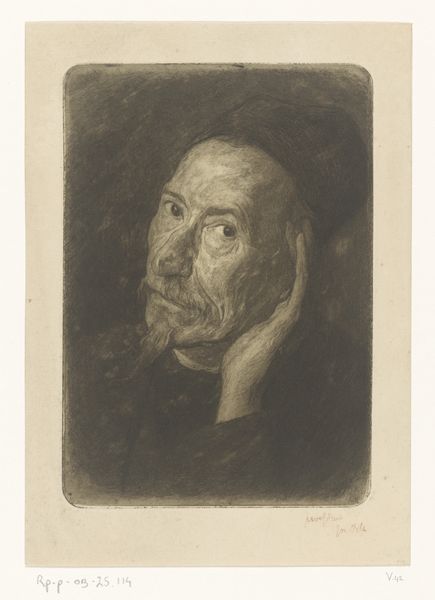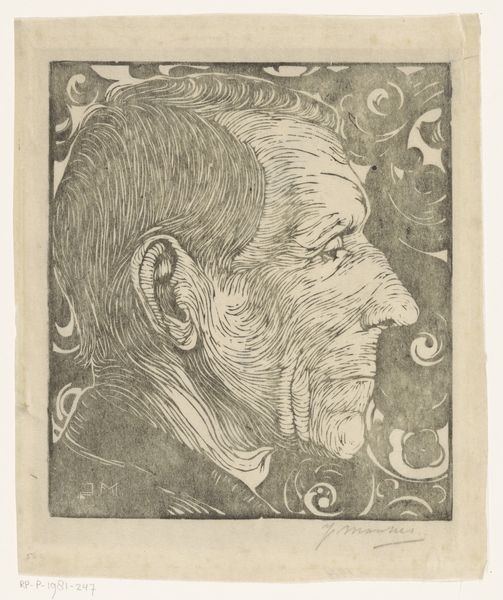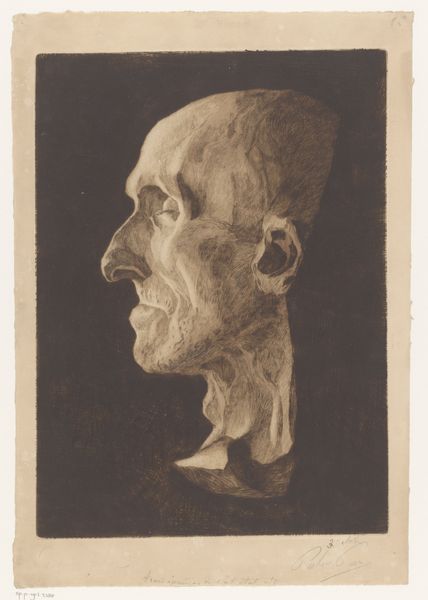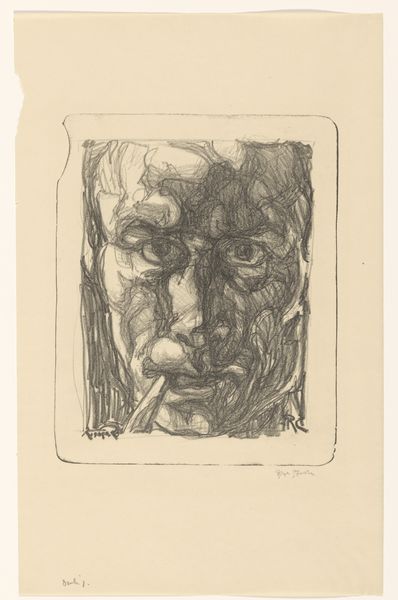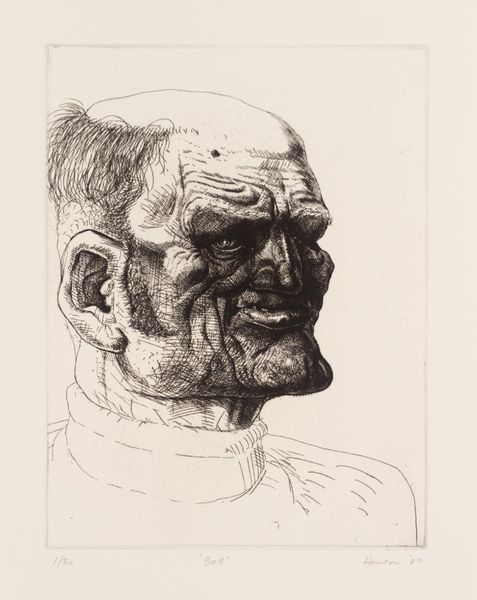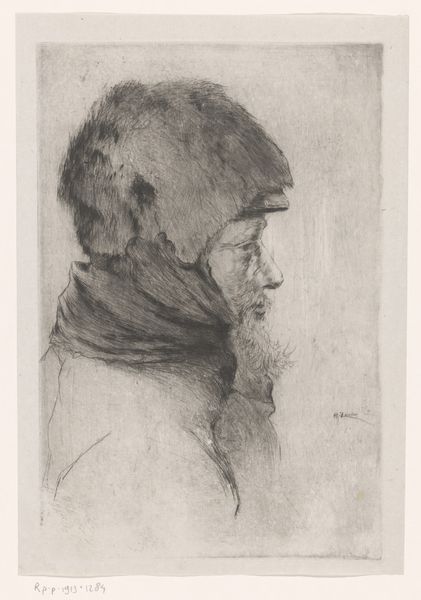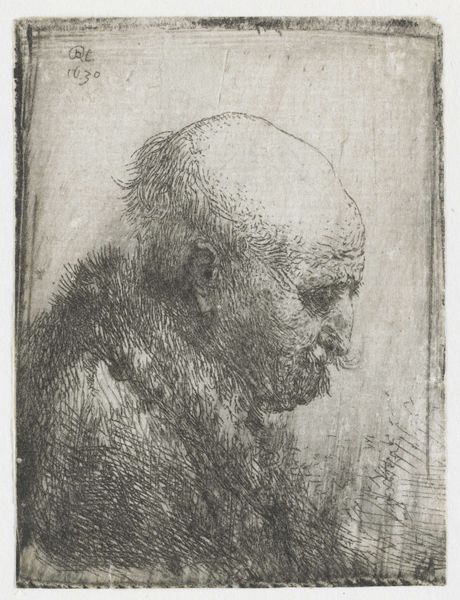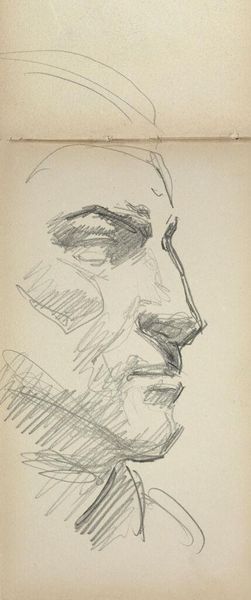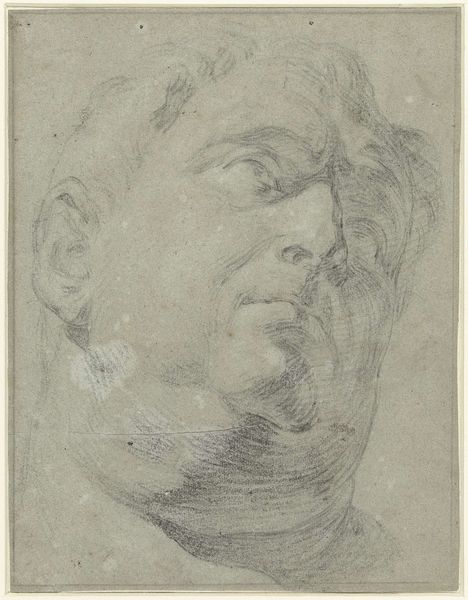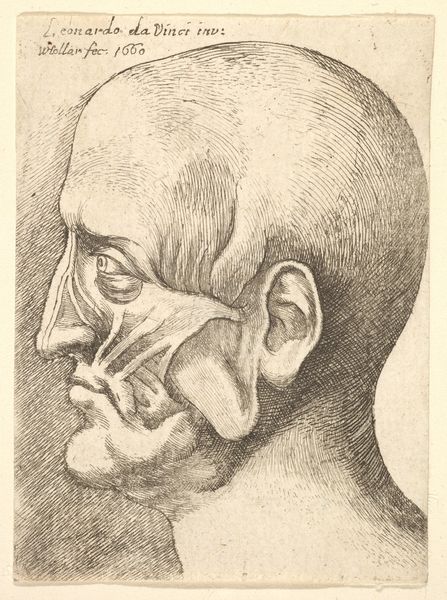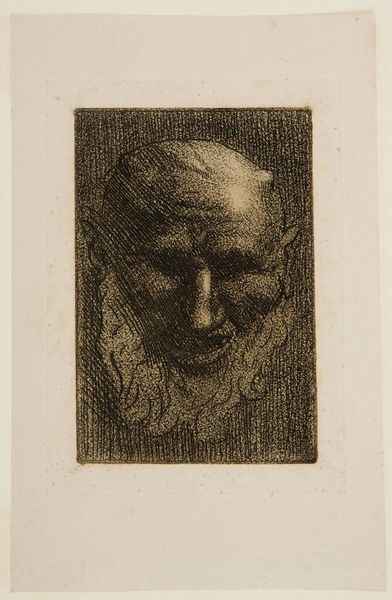
drawing, print, graphite
#
portrait
#
pencil drawn
#
drawing
# print
#
pencil drawing
#
expressionism
#
graphite
#
portrait drawing
Copyright: National Gallery of Art: CC0 1.0
Adolfo Bellocq created this etching called “Vagabundo,” or "Vagabond" in English, sometime in the mid-20th century. The face of an unkempt, older man fills the frame. His eyes are closed, his expression unreadable. Bellocq was an Argentinian artist, known for prints that often highlighted the lives of working-class people. In the decades surrounding the creation of this print, Argentina experienced rapid industrialization and urbanization alongside significant social and political upheaval. Bellocq, like other artists of his time, used printmaking as a means to represent these changes. His chosen subject matter was not the rising elite but those left behind. By portraying a vagabond, Bellocq challenges the prevailing social norms of his time. He asks the viewer to consider the humanity of those living on the margins. To understand Bellocq's work better, we need to examine the history of Argentina, the rise of printmaking as a medium for social commentary, and the broader cultural context in which he was working. Ultimately, this artwork offers a glimpse into a society undergoing profound transformation.
Comments
No comments
Be the first to comment and join the conversation on the ultimate creative platform.
